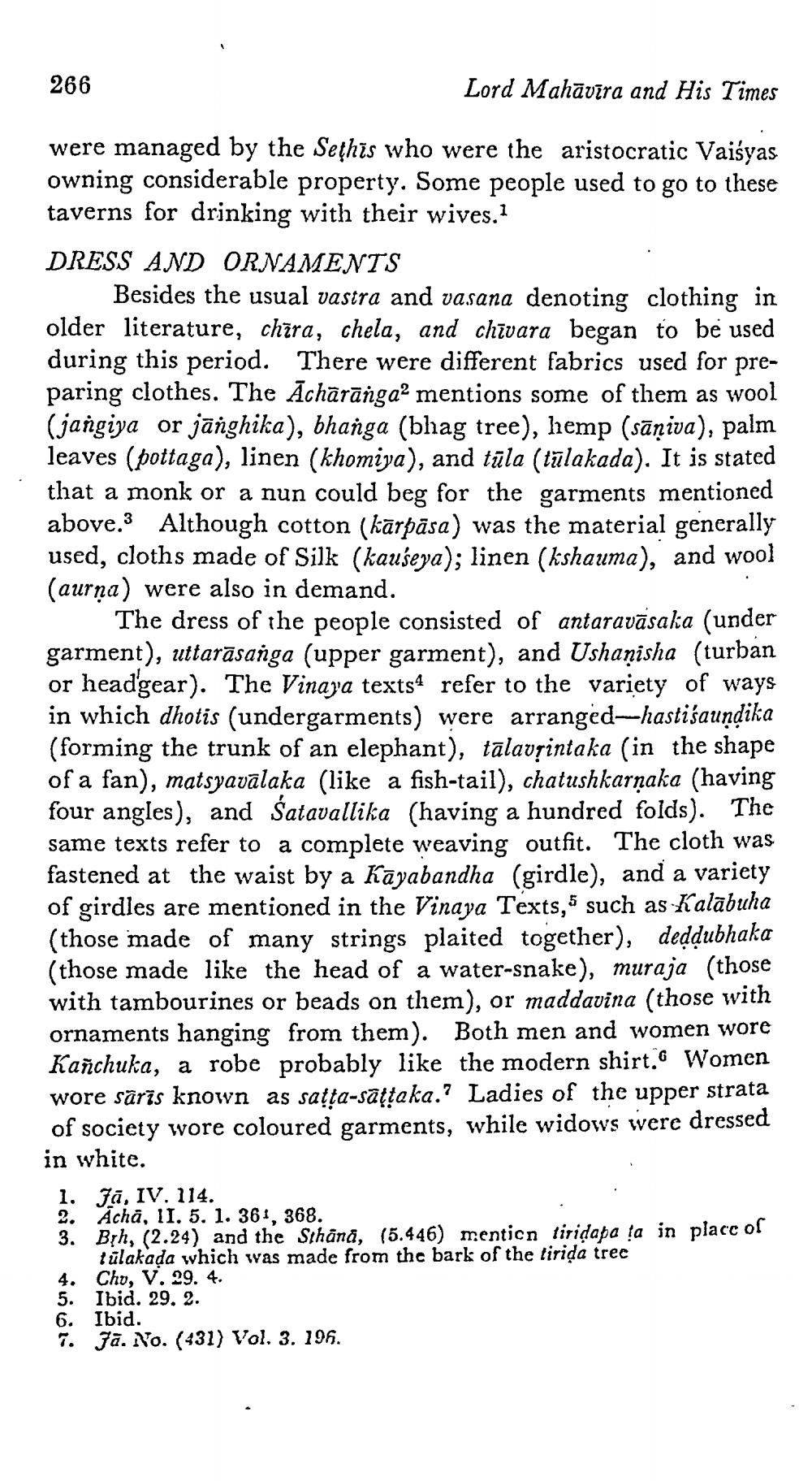________________
266
Lord Mahāvīra and His Times
were managed by the Sethis who were the aristocratic Vaisyas owning considerable property. Some people used to go to these taverns for drinking with their wives. DRESS AND ORNAMENTS
Besides the usual vastra and vasana denoting clothing in older literature, chira, chela, and chivara began to be used during this period. There were different fabrics used for preparing clothes. The Achārānga” mentions some of them as wool (jangiya or jānghika), bhanga (bhag tree), hemp (sāņiva), palm leaves (pottaga), linen (khomiya), and tūla (tūlakada). It is stated that a monk or a nun could beg for the garments mentioned above.3 Although cotton (kārpāsa) was the material generally used, cloths made of Silk (kaušeya); linen (kshauma), and wool (aurna) were also in demand.
The dress of the people consisted of antaravāsaka (under garment), uttarāsanga (upper garment), and Ushanisha (turban or headgear). The Vinaya texts4 refer to the variety of ways in which dhotis (undergarments) were arranged-hastiśaundika (forming the trunk of an elephant), tālavșintaka (in the shape of a fan), matsyavalaka (like a fish-tail), chatushkarņaka (having four angles), and Satavallika (having a hundred folds). The same texts refer to a complete weaving outfit. The cloth was fastened at the waist by a Kāyabandha (girdle), and a variety of girdles are mentioned in the Vinaya Texts, such as Kalābuha (those made of many strings plaited together), deddubhaka (those made like the head of a water-snake), muraja (those with tambourines or beads on them), or maddavina (those with ornaments hanging from them). Both men and women wore Kañchuka, a robe probably like the modern shirt. Women wore sārīs known as satta-sâțtaka.? Ladies of the upper strata of society wore coloured garments, while widows were dressed in white. . Jā, IV. 114.
Acha, 11. 5. 1. 361, 368. 3. Bịh, (2.24) and the Sthână, (5.446) menticn tiridapa !a in placc of
tülakada which was made from the bark of the tirida tree 4. Cho, V. 29. 4. 5. Ibid. 29. 2. 6. Ibid. 7. Ja. No. (431) Vol. 3. 196.




